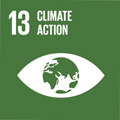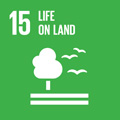- Docente: Lisa Borgatti
- Credits: 6
- SSD: GEO/05
- Language: English
- Moduli: Lisa Borgatti (Modulo 1) Giacomo Titti (Modulo 2)
- Teaching Mode: In-person learning (entirely or partially) (Modulo 1); In-person learning (entirely or partially) (Modulo 2)
- Campus: Bologna
-
Corso:
Second cycle degree programme (LM) in
Environmental Engineering (cod. 8894)
Also valid for Second cycle degree programme (LM) in Civil Engineering (cod. 0930)
Second cycle degree programme (LM) in Civil Engineering (cod. 8895)
-
from Sep 18, 2024 to Nov 14, 2024
-
from Nov 20, 2024 to Dec 19, 2024
Learning outcomes
The course is aimed at studying the engineering and environmental problems which may arise as a result of the interaction between geology and human activities. The main goal of the course is to improve the knowledge of geological and geomorphological processes, developing skills in the analysis of their effects on civil engineering design. On completion of this course, students will be able to: make preliminary site assessments on the basis of desk-study information; plan a programme of site investigation, selecting suitable invasive and non-invasive ground techniques; contribute to hydro-geological hazard assessment and to the development of measures for prevention and remediation of geological hazards.
Course contents
A prior knowledge and understanding of basic geology are required to attend with profit this course.
Fluent spoken and written English is a necessary pre-requisite as well: all lectures and tutorials, and all study material will be in English.
With reference to the aims of the course, the programme will deal with the topics listed hereafter, with particular reference to unstable slopes.
Module 1 (30 hrs)
a. Assessment of the geological model on the basis of the characteristics of soils and rocks and their mechanical behaviour, of a geognostic campaigns and of monitoring data;
b. Case studies of surveys and campaigns aimed at the assessment of the geological model of unstable slopes;
c. Monitoring: devices and applications in different geological and geomorphological contexts.
Module 2 (18 hrs)
d. Design: IT tools and methods to manage and process spatial data
Readings/Bibliography
All the provided materials, documents and readings are available on the VIRTUALE platform (https://virtuale.unibo.it ) of the course.
The material contains all the knowledge necessary to take the final exam.
Some readings which may help the student to the final exam preparation are:
- Turner A. K. & Schuster L.R., Landslides: investigation and mitigation. TRB Special Report 247
- Dikau R., Brunsden D., Schrott L., Ibsen M.L. , Landslide Recognition: Identification, Movement and Causes, Wiley
Additional material can be found here:
Hoek E., Practical Rock Engineering -http://www.rocscience.com/Hoekcorner.htm
Teaching methods
Classroom teaching, practical exercises, group discussion, seminars by experts, field trip.
Assessment methods
For those who attend the course, homework on a case study selected by the student will be assigned and assessed by an oral presentation and a written report to be delivered at the end of the course. Achievements will be assessed by the analytical assessment of the assignments on the case study (2/3 of the final mark) plus a computer-based multiple choice test (1/3) composed of 30 questions with no penalty to be completed in 30 minutes.
Notes and books cannot be used during the written exam.For students who don't attend the course a written exam with open and multiple choice questions plus an oral discussion is foreseen.
Higher grades will be awarded to students who demonstrate the organic understanding of the subject, the ability in critical applications, and a clear and concise presentation of the contents in their homework.
To obtain a passing grade, students are required to at least demonstrate a knowledge of the key concepts of the subject, some ability for critical application, and a comprehensible use of technical language.
A failing grade will be awarded if the student shows knowledge gaps in key-concepts of the subject, inappropriate use of language, and/or logic failures in the analysis of the subject.
Teaching tools
Videos and other contents from the web will complement the teaching material. Some practical activities will be carried out on thematic maps and with specific software. All the material is provided through Virtuale.
Office hours
See the website of Lisa Borgatti
See the website of Giacomo Titti
SDGs



This teaching activity contributes to the achievement of the Sustainable Development Goals of the UN 2030 Agenda.
